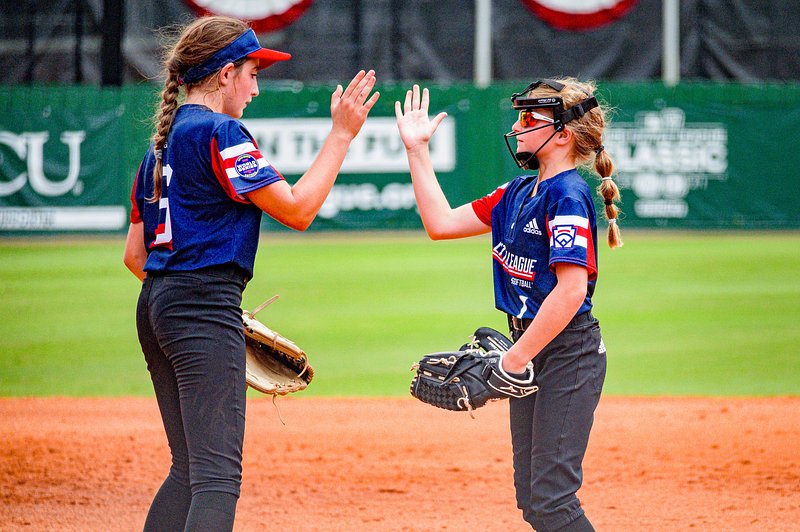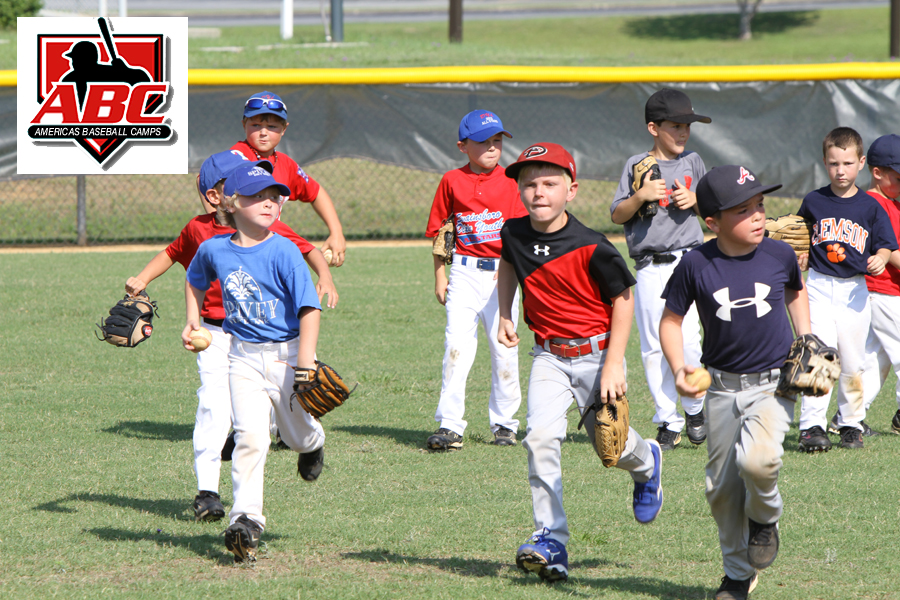Baseball and softball aren’t just games, they’re opportunities for young athletes to grow, develop their coordination, and cultivate a passion for sports. To truly help a young player excel, however, it requires more than just tossing a ball around in the backyard. It requires specific drills, a positive coaching atmosphere, and a solid grasp of how to cultivate young talent.
Main Points
Use basic drills to enhance batting, catching, and throwing abilities.
Promote a positive attitude to increase confidence and enjoyment.
Carry out fun, game-like practices to maintain kids’ interest.
Select the appropriate equipment to aid in skill development.
Equip young athletes for game day with mental and physical routines.
Unleash the Potential in Young Baseball and Softball Players
Each child that steps onto the field has the potential to become an excellent player. The trick is to identify their individual strengths and areas for growth. It’s not just about hitting harder or running faster; it’s about learning the correct techniques from the beginning.

Enhancing Abilities with Basic but Efficient Drills
Drills form the foundation of any successful athletic training regimen. They simplify complicated actions into comprehensible pieces, making it simpler for children to grasp and perfect the techniques. The most effective drills for children are those that are straightforward to describe, simple to show, and, above all, enjoyable to do.
Establishing a Positive and Encouraging Coaching Atmosphere
Any successful coach understands that how you teach is just as significant as what you teach. A little bit of encouragement can do wonders in boosting a child’s self-esteem. Don’t forget to acknowledge the minor achievements, such as a well-performed play or an instance of fair play.
Training Exercises to Improve Basic Baseball Abilities
Here are a few specific exercises that are great for 8-year-olds. These exercises are meant to be enjoyable and interactive while instilling the basic abilities required to play baseball and softball.
Mastering Tee Ball: Enhancing Batting Skills
The tee is a crucial tool for little sluggers. It lets them concentrate on their swing instead of the pitch’s timing. Here’s an easy drill:
Begin with the tee at the height of the waist. Have the player take 10 swings with their focus on keeping their eye on the ball and hitting the ball with the center of the bat. Slowly move the tee up and down to practice hitting balls at different heights.
Ground Ball Greatness: Infield Defense Drills
Good infielders need quick reflexes and soft hands. This drill helps develop both:
Begin by rolling the ball on the ground to the player from a short distance away.
Urge them to position themselves in front of the ball and use their glove to scoop it up.
Once they have fielded the ball, they should then throw it to a specific target.
As they get better, you can gradually roll the ball from further away and at a faster pace. For more detailed exercises, check out these baseball fielding drills to help young players develop their skills.
Mastering the Pop Fly: Outfield Catching Drills
Catching fly balls can be difficult for youngsters. Use this drill to boost their confidence:
Throw a ball into the air and ask the child to follow its trajectory.
Encourage them to shout “I got it!” to signal to other players.
Emphasize the importance of using both hands to catch the ball for maximum control.
Begin with gentle, high throws and slowly make the throws more challenging as they become more confident.
Base Running Blitz: Speed and Agility Workouts
Base running isn’t just about how fast you can run, but also about making smart decisions on the fly. This drill can help you improve both speed and agility:
Arrange four bases in a diamond shape, mimicking a real baseball diamond.
Ask the player to run from one base to another, ensuring they touch each base.
Time the player to introduce a competitive aspect and promote quicker running.
This drill not only enhances speed but also emphasizes the significance of running through the base.
Building a Strong Foundation with Softball Drills
Softball is more than just hitting and running—it’s a game of strategy and skill. To help young players build a strong foundation, it’s important to focus on drills that improve their overall abilities. Let’s look at some drills that can be incorporated into your coaching sessions.

Power Hitting: Swing Strength Drills
Building a strong swing begins with the right mechanics and power. Here’s a drill to help you generate more power: learn about advanced youth hitting techniques.
Start by having the player stand with their feet at the width of their shoulders and a slight bend in their knees.
Encourage them to swing a bat with a weight or donut to help build their muscles.
Have them concentrate on using their hips to drive through the ball and keep their hands inside the ball.
This drill is great for not only improving the strength of their swing but also teaching the player how to use their body effectively.
Pitching with Precision: Techniques to Boost Speed and Accuracy
Being able to pitch effectively is a vital part of softball, and it’s just as crucial to be accurate as it is to be fast. Here’s a drill to help with both:
Establish a target at the height of the strike zone on a backstop or net.
Let the player practice pitching from the mound, with the target in mind.
Begin with slow pitches with a focus on form, then gradually add speed while keeping accuracy.
Regular practice with this drill will assist young pitchers in finding their control and power.
Active Defense: Drills for Reactivity and Coordination
Great defense is a game changer, and agility is a crucial component for any defensive player. For those looking to improve reactivity and coordination, incorporating fielding drills can make a significant difference on the field.
Arrange a ladder on the ground or use chalk to make a ladder pattern on the ground.
Have the players do different footwork exercises through the ladder, like the Ickey Shuffle or in-and-outs.
Add ground balls or pop flies at the end of the ladder to mimic game scenarios.
This drill will not only enhance footwork but also the player’s skill to switch from movement to fielding.
Mastering Baserunning: Drills for Base Stealing and Sliding
Base stealing and sliding are high-level skills that can provide a competitive advantage. Introduce these techniques to young players with this drill:
Train on taking leads and jumps off first base to enhance the player’s skills in reading pitchers and getting a good start.
Improve on sliding technique using a sliding mat or a safe, grassy area to avoid injury.
Include game-like situations where players have to decide when to steal and practice their slides into the base.
Through repetition, players will gain more confidence in their baserunning decisions and techniques.
Guidance for Coaches to Optimize Player Growth
As a coach, your responsibilities go beyond just teaching the mechanics of the game. You also serve as a guide and a source of inspiration. Here are some pointers for coaches to help you bring out the best in your players.
Fostering a Positive Attitude in Youth Athletes
Teach the players to view obstacles as chances to get better. Remind them that errors are a part of the learning process and that hard work brings about improvement. Applaud their dedication and development, not just their victories and statistics.
How to Provide Helpful Feedback
Providing feedback is crucial for growth, but it needs to be given in a way that’s helpful. Try the “sandwich” technique: begin with a positive comment, follow with the area that needs improvement, then wrap up with another positive comment. This method keeps players encouraged and ready to learn.
Fostering a Positive Team Environment
Teams that work well together are more likely to succeed. Plan activities that encourage team bonding and promote a supportive atmosphere among players. Ensure that each player feels important and has a part in the team’s success.
What Equipment You Need for Training
Having the right equipment can really help with training. Here’s what you should look for when you’re choosing gear for practice.
Choosing the Best Equipment for Successful Training
Resilient baseballs and softballs that are built to last.
High-quality bats that match the player’s physique and power.
Safety equipment like helmets and gloves that are the right size.
Training tools like tees, nets, and pitching machines.
Spending money on excellent gear not only enhances the quality of practice but also ensures the safety of players.
Implementing Training Tools to Boost Player Abilities
Training tools can offer extra assistance and diversity in training. For instance, a batting tee lets players improve their swing on their own, while a rebounder net is ideal for individual fielding practice. Utilize these resources to strengthen abilities and maintain practice interesting.
Creating and Implementing Fun Practices
Practices that are well-thought out keep players interested and enthusiastic about the sport. Include a variety of drills, skills training, and scrimmage play to keep things fun and exciting.

How to Develop Practice Plans that Kids Enjoy
Begin with a dynamic warm-up to get players loose and prepared. Next, transition into drills that target specific skills, making sure to clarify the objective behind each one. Finish with an enjoyable scrimmage or game to apply those skills. Always allocate time for cool-down and a team meeting to recap what was learned.
Planning Enjoyable and Competitive Games for Training
Next, we will discuss how to make things fun. Baseball and softball are games, so they should be fun. You can keep young players interested and motivated to get better by planning games that are both enjoyable and competitive. For example, you could organize a mini-tournament with various skill challenges, or play a game where players get points for using the correct techniques. To ensure the training is age-appropriate and effective, consider incorporating age-specific skill improvement strategies into your games.
Getting Ready for the Big Game
The big game is when the kids get to show off all the skills they’ve been working on. It’s important to make sure they’re not just physically ready, but also mentally prepared.
Begin by explaining why it’s essential to get a good night’s rest and eat a healthy meal before a game. Next, guide them through the day’s agenda so they’re aware of what’s coming. Above all, emphasize the importance of concentrating on the process rather than the result. It’s about performing at their best, not just about victory.
Talk about the game plan and any specific strategies for the day.
Perform a pre-game warm-up routine to prepare their bodies.
Promote a team chant or huddle to enhance morale and unity.
Mental Preparation and Pre-game Routines
Mental preparation is as important as physical training. Train your players to visualize successful plays and to use deep breathing techniques to calm nerves. Motivate them to set personal goals for the game, such as getting on base or making a great defensive play.
Field Tips for Young Athletes
When they’re on the field, players should remember the basics: keep their eye on the ball, talk to their teammates, and always be ready for the next play. Make sure they understand the importance of sticking to their position and trusting in their training. Remind them that everyone makes mistakes, and the best thing they can do is to shake it off and prepare for the next play.
Questions You May Have
Before we finish, let’s answer some of the usual questions that parents and coaches of young baseball and softball players tend to have.
What is the optimal age to begin baseball or softball training?
While there is no universal answer, many children begin playing tee-ball between the ages of 4 and 6. By the time they reach 8 years old, they are typically ready for more structured training and game play. The main objective is to make sure the experience is positive and centered around skill development.
What is the ideal frequency of baseball or softball practice for 8-year-olds?
It’s recommended that 8-year-olds have two to three practices per week, with each session lasting approximately one to one and a half hours. This frequency ensures steady improvement in their skills without making the sport feel like a chore or overwhelming them.
What are good pitching habits for young players?
Safety is key when it comes to young arms. Keep pitch counts low and make sure there’s plenty of rest between pitching sessions. Teach the right mechanics from the get-go to prevent injuries. And don’t forget, playing more than one position can help build overall athleticism and lower the risk of overuse injuries.
How do I ensure my child stays interested in the sport?
The key to maintaining interest is fostering a passion for the game. Make sure to keep practices engaging and enjoyable, always give positive reinforcement, and applaud hard work just as much as you would a win. Give them the chance to explore different roles and parts of the game to keep it new and exciting.
These drills, tips, and strategies will give you the tools you need to help young athletes excel in baseball and softball. The aim is to develop their skills, boost their confidence, and instill a lifelong passion for the sport.
If you’re interested in learning more about the game and want to improve your coaching or playing skills, take a look at Line Drive Hitter 2.0: Engineering the Alpha. This unique online video mini-course is designed to help players hit hard line drives more consistently. Don’t miss this opportunity to change your game—sign up now!
Leave a Reply